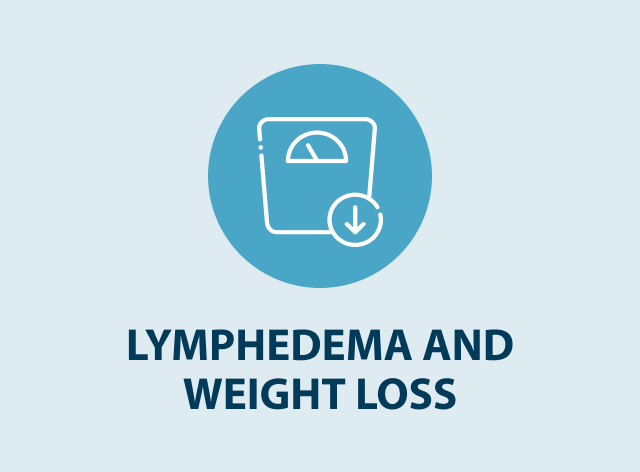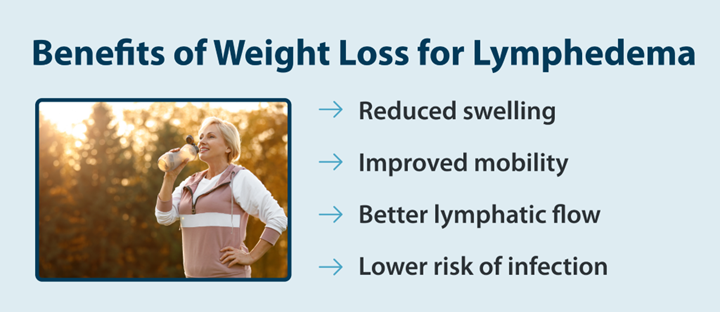How to Lose Weight With Lymphedema
Losing weight when living with lymphedema requires a thoughtful and well-planned strategy that considers the specific challenges your condition presents. Effective management occurs when you create an approach that benefits both your weight reduction efforts and your lymphatic system health simultaneously, ensuring that your weight loss attempts don’t exacerbate your lymphedema symptoms.

Consult with healthcare professionals
Working with professionals who treat lymphedema is essential for creating an effective weight loss plan that considers your unique needs. Your primary care doctor will assess your overall health and recommend appropriate weight loss strategies, while a lymphedema therapist can provide specialized guidance on managing your condition during weight loss.
These healthcare professionals will work together to create a comprehensive lymphedema treatment plan, which typically includes complete decongestive therapy. This therapy combines multiple treatment approaches to manage your swelling while supporting your weight loss efforts. This collaborative approach ensures that your weight loss plan doesn’t interfere with your lymphedema management and that both goals support each other.
Your healthcare team can also monitor your progress and adjust your weight loss and lymphedema treatment plan as needed, helping you address any challenges that arise while you’re trying to lose weight. They can provide guidance on realistic goals, safe rates of weight loss, and how to modify your approach if your lymphedema symptoms change.
Exercise
A lymphedema therapist can develop an exercise plan that is safe and effective for someone with your condition, focusing on activities that promote lymphatic drainage while supporting weight loss.
Safe exercises for people with lymphedema typically include walking, swimming, and lymphedema exercises that engage your muscle pumps to help move lymphatic fluid. Yoga for lymphedema can also be an excellent option, combining gentle movement with positions that promote lymphatic drainage. Your therapist will help you avoid exercises that might worsen your swelling, such as high-impact activities or exercises that involve prolonged dependent positioning of affected limbs.
Dietary changes
A diet that aids in both weight loss and lymphatic health focuses on anti-inflammatory foods that can help reduce the inflammation associated with lymphedema while creating the caloric deficit required for you to lose weight. A lymphedema diet emphasizes fruits, vegetables, whole grains, and lean proteins while limiting processed foods high in sugar and salt, providing the foundation for effective weight management.
Portion control is especially important when losing weight with lymphedema, as you want to create a sustainable caloric deficit without compromising your nutritional needs. Your lymphatic system requires adequate protein and nutrients to function properly, so extreme calorie restriction isn’t recommended.
Reducing sodium intake is particularly beneficial for people with lymphedema, as excess salt can worsen fluid retention and swelling.
Compression
While compression therapy doesn’t directly help lymphedema patients lose weight, it does help reduce swelling and fluid buildup, which improves mobility. This improved mobility makes it easier to stay active and engage in the physical activity necessary for weight management. Proper compression provides support during exercise and reduces the sensation of heaviness in affected limbs.
Compression garments, such as sleeves and stockings, provide consistent pressure, while pneumatic compression devices offer advanced therapeutic options. Tactile Medical’s Flexitouch Plus, Entre Plus, and Nimbl systems offer programmable, sequential compression, helping to manage symptoms while you work toward achieving your weight loss goals.
Manual lymphatic drainage
Similar to compression therapy, manual lymphatic drainage doesn’t directly help patients lose weight, but it reduces swelling and discomfort, making physical activity more comfortable. This specialized massage technique uses gentle, rhythmic movements to stimulate lymphatic flow and reduce fluid accumulation in affected tissues.
Learning how to do a lymphatic massage or working with a trained lymphedema therapist can help you manage symptoms more effectively during weight loss. The improved comfort from regular sessions makes it easier to stay active.


